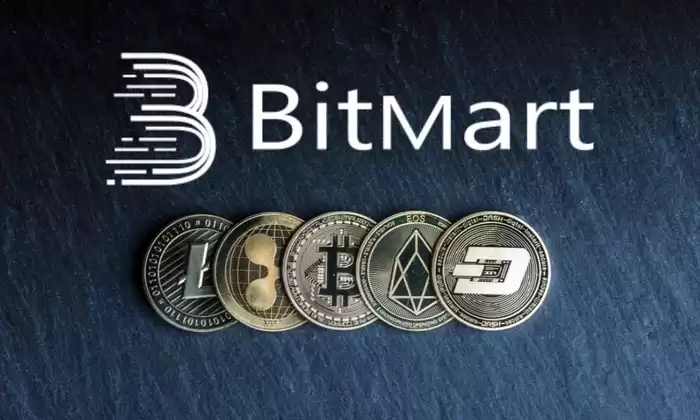-
 Bitcoin
Bitcoin $117600
0.25% -
 Ethereum
Ethereum $4424
0.10% -
 XRP
XRP $3.101
0.50% -
 Tether USDt
Tether USDt $1.001
-0.01% -
 BNB
BNB $836.2
1.26% -
 Solana
Solana $188.8
2.11% -
 USDC
USDC $1.000
0.01% -
 Dogecoin
Dogecoin $0.2301
0.57% -
 TRON
TRON $0.3485
-1.00% -
 Cardano
Cardano $0.9209
-1.34% -
 Hyperliquid
Hyperliquid $46.72
-1.19% -
 Chainlink
Chainlink $22.62
4.84% -
 Stellar
Stellar $0.4275
-0.38% -
 Sui
Sui $3.761
1.91% -
 Bitcoin Cash
Bitcoin Cash $586.7
-0.25% -
 Ethena USDe
Ethena USDe $1.001
0.01% -
 Hedera
Hedera $0.2510
2.06% -
 Avalanche
Avalanche $24.21
2.22% -
 Litecoin
Litecoin $119.7
1.07% -
 Toncoin
Toncoin $3.450
1.06% -
 UNUS SED LEO
UNUS SED LEO $9.411
-0.93% -
 Shiba Inu
Shiba Inu $0.00001298
1.20% -
 Uniswap
Uniswap $10.98
3.25% -
 Polkadot
Polkadot $3.961
2.16% -
 Dai
Dai $1.000
0.00% -
 Bitget Token
Bitget Token $4.642
0.95% -
 Cronos
Cronos $0.1514
0.57% -
 Ethena
Ethena $0.7290
3.78% -
 Monero
Monero $254.1
7.69% -
 Pepe
Pepe $0.00001102
2.47%
How to operate BitMart contract trading
In BitMart's contract trading platform, traders have access to a range of cryptocurrency contracts with varying underlying assets, expiration dates, strike prices, and premiums to choose from.
Nov 24, 2024 at 01:54 pm

How to Operate BitMart Contract Trading
Introduction
Contract trading is a powerful tool that allows traders to gain exposure to the price movements of an underlying asset without having to own the asset itself. While it can be a rewarding endeavor, contract trading also comes with inherent risks. It is important to understand how contract trading works before you begin trading.
Step 1: Open a BitMart Account
The first step to operating BitMart contract trading is to open an account. You can do this by visiting the BitMart website (www.bitmart.com) and clicking on the "Register" button. Once you have registered, you will need to verify your email address and phone number.
Step 2: Fund Your Account
Once you have verified your account, you will need to fund it with cryptocurrency. You can do this by depositing cryptocurrency from another exchange or wallet, or by purchasing cryptocurrency using a credit or debit card.
Step 3: Choose a Contract
Once you have funded your account, you can choose a contract to trade. BitMart offers a variety of contracts, including contracts for Bitcoin, Ethereum, Litecoin, and other cryptocurrencies. When choosing a contract, you will need to consider the following factors:
- The underlying asset: The underlying asset is the asset that the contract is based on.
- The expiration date: The expiration date is the date on which the contract expires.
- The strike price: The strike price is the price at which the contract can be exercised.
- The premium: The premium is the price of the contract.
Step 4: Place an Order
Once you have chosen a contract, you can place an order to buy or sell it. When placing an order, you will need to specify the following information:
- The order type: The order type determines how your order will be executed.
- The quantity: The quantity is the number of contracts that you want to buy or sell.
- The price: The price is the price at which you want to buy or sell the contracts.
Step 5: Manage Your Risk
Once your order has been placed, you will need to manage your risk. This can be done by using stop-loss orders and take-profit orders.
- Stop-loss orders allow you to limit your losses by automatically selling your contracts if the price falls below a certain level.
- Take-profit orders allow you to lock in your profits by automatically selling your contracts if the price rises above a certain level.
Step 6: Close Your Position
Once you are ready to close your position, you can do so by selling the contracts that you bought or buying back the contracts that you sold. When you close your position, you will be paid or charged the difference between the price at which you opened the position and the price at which you closed it.
Conclusion
Contract trading is a powerful tool that can be used to gain exposure to the price movements of an underlying asset without having to own the asset itself. However, it is important to understand how contract trading works before you begin trading.
Disclaimer:info@kdj.com
The information provided is not trading advice. kdj.com does not assume any responsibility for any investments made based on the information provided in this article. Cryptocurrencies are highly volatile and it is highly recommended that you invest with caution after thorough research!
If you believe that the content used on this website infringes your copyright, please contact us immediately (info@kdj.com) and we will delete it promptly.
- Kazakhstan's Crypto Leap: Bitcoin ETF and Central Asia's Digital Finance Future
- 2025-08-13 12:45:19
- BlockDAG Presale Blazes Past $371M: Fundraising Frenzy Fuels Crypto Sensation
- 2025-08-13 13:05:21
- Meme Coins: Chasing the 2025 Surge – Which Will Moonshot?
- 2025-08-13 10:25:23
- Bitcoin's Wild Ride: Rally, Pullback, and What's Next
- 2025-08-13 10:25:23
- Bitcoin, Bitmax, and Institutional Demand: A New Era of Crypto Investment
- 2025-08-13 10:45:12
- Solana, ROAM, and Airdrops: What's the Buzz in 2025?
- 2025-08-13 11:35:13
Related knowledge

Is it possible to adjust the leverage on an open position on KuCoin?
Aug 09,2025 at 08:21pm
Understanding Leverage in KuCoin Futures TradingLeverage in KuCoin Futures allows traders to amplify their exposure to price movements by borrowing fu...

What cryptocurrencies are supported as collateral on KuCoin Futures?
Aug 11,2025 at 04:21am
Overview of KuCoin Futures and Collateral MechanismKuCoin Futures is a derivatives trading platform that allows users to trade perpetual and delivery ...

What is the difference between realized and unrealized PNL on KuCoin?
Aug 09,2025 at 01:49am
Understanding Realized and Unrealized PNL on KuCoinWhen trading on KuCoin, especially in futures and perpetual contracts, understanding the distinctio...

What different order types are available to use on KuCoin Futures?
Aug 13,2025 at 11:35am
Understanding Order Types on KuCoin FuturesKuCoin Futures offers a comprehensive range of order types to accommodate different trading strategies and ...

How does KuCoin Futures compare against Binance Futures in terms of features?
Aug 09,2025 at 03:22am
Trading Interface and User ExperienceThe trading interface is a critical component when comparing KuCoin Futures and Binance Futures, as it directly i...

How can I manage risk when applying high leverage on KuCoin?
Aug 13,2025 at 11:35am
Understanding High Leverage and Its Implications on KuCoinHigh leverage in cryptocurrency trading allows users to control larger positions with a rela...

Is it possible to adjust the leverage on an open position on KuCoin?
Aug 09,2025 at 08:21pm
Understanding Leverage in KuCoin Futures TradingLeverage in KuCoin Futures allows traders to amplify their exposure to price movements by borrowing fu...

What cryptocurrencies are supported as collateral on KuCoin Futures?
Aug 11,2025 at 04:21am
Overview of KuCoin Futures and Collateral MechanismKuCoin Futures is a derivatives trading platform that allows users to trade perpetual and delivery ...

What is the difference between realized and unrealized PNL on KuCoin?
Aug 09,2025 at 01:49am
Understanding Realized and Unrealized PNL on KuCoinWhen trading on KuCoin, especially in futures and perpetual contracts, understanding the distinctio...

What different order types are available to use on KuCoin Futures?
Aug 13,2025 at 11:35am
Understanding Order Types on KuCoin FuturesKuCoin Futures offers a comprehensive range of order types to accommodate different trading strategies and ...

How does KuCoin Futures compare against Binance Futures in terms of features?
Aug 09,2025 at 03:22am
Trading Interface and User ExperienceThe trading interface is a critical component when comparing KuCoin Futures and Binance Futures, as it directly i...

How can I manage risk when applying high leverage on KuCoin?
Aug 13,2025 at 11:35am
Understanding High Leverage and Its Implications on KuCoinHigh leverage in cryptocurrency trading allows users to control larger positions with a rela...
See all articles

























































































